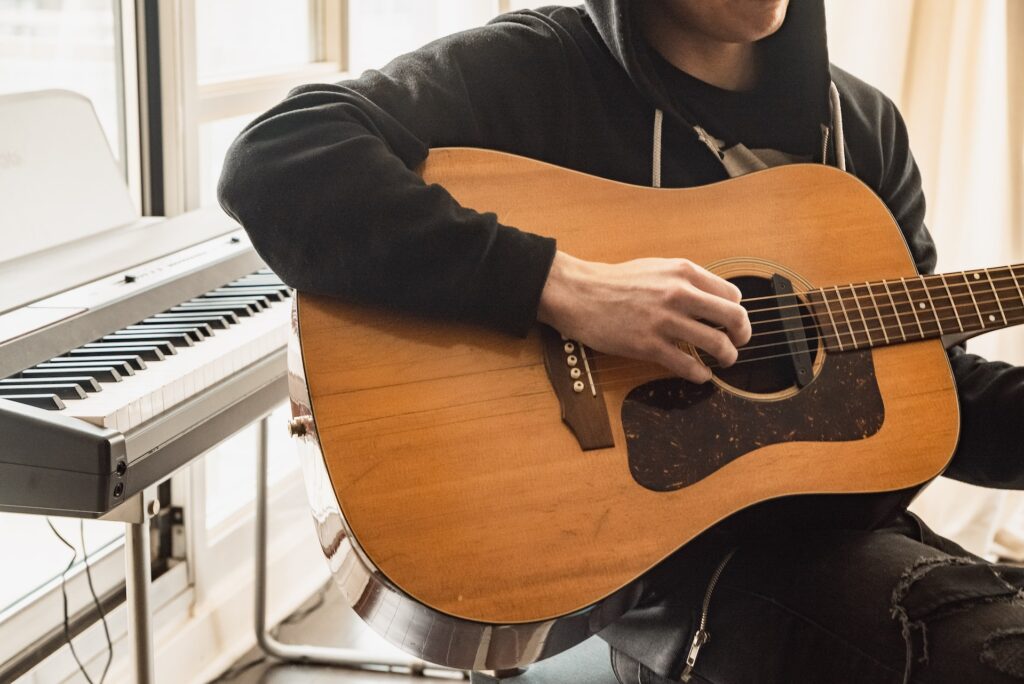Rhythm is the heartbeat of music. It’s the driving force that propels a song forward, gives it energy, and connects with listeners on a visceral level. For guitarists, mastering rhythm techniques is essential not only for playing with precision but also for creating a musical groove that captivates the audience. In this comprehensive guide, we’ll delve into the world of rhythm techniques for guitarists, exploring the fundamentals, advanced concepts, and practical tips that will elevate your playing to new heights.

The Importance of Rhythm in Guitar Playing
Before we dive into specific techniques, let’s understand why rhythm is so crucial for guitarists. Rhythm encompasses several aspects:
- Timing: Good timing keeps a song cohesive and danceable. It’s the difference between a melody that soars and one that stumbles.
- Groove: Groove is the irresistible pulse that makes you tap your foot or nod your head. A well-developed groove can make a song infectious.
- Expressiveness: Rhythm is a tool for emotional expression. Slowing down or speeding up a passage can convey feelings of tension, excitement, or relaxation.
- Dynamic Playing: Rhythmic dynamics, such as accents and staccato notes, add depth and contrast to your guitar playing.
Basic Rhythm Techniques
1. Strumming Patterns:
- Begin with simple strumming patterns using downstrokes and upstrokes.
- Practice common patterns like the down-down-up-up-down-up (D-D-U-U-D-U) strum.
2. Basic Chord Progressions:
- Learn foundational chord progressions, such as the I-IV-V in major keys or the i-iv-VII in minor keys.
- Experiment with changing chords smoothly and in time.
3. Metronome Practice:
- A metronome is your best friend for developing timing. Start slow and gradually increase the tempo as you become comfortable.
4. Counting Rhythms:
- Learn to count rhythms by subdividing beats (e.g., eighth notes, sixteenth notes).
- Practice counting while playing to develop a strong internal sense of timing.
Advanced Rhythm Techniques
1. Syncopation:
- Syncopation involves emphasizing off-beat rhythms, creating a sense of surprise and movement in your playing.
- Experiment with syncopated strumming patterns and melodies.
2. Palm Muting:
- Palm muting involves lightly resting the palm of your hand on the strings near the bridge to create a percussive, muted sound.
- Use palm muting to add a rhythmic punch to your playing.
3. Rhythmic Displacement:
- Try shifting the emphasis of a rhythm to unexpected beats or subdivisions.
- This technique can add complexity and interest to your guitar parts.
4. Polyrhythms:
- Polyrhythms involve playing multiple rhythms simultaneously. For instance, you might play triplets in your right hand and eighth notes in your left hand.
- Polyrhythms can create a hypnotic and intricate rhythmic texture.
Practical Tips for Mastering Rhythm
- Listen Actively: Pay close attention to the rhythm in the music you love. Try to replicate complex rhythms you hear in songs.
- Practice Slowly: When learning a new rhythm, start at a slow tempo and gradually increase it as you gain confidence.
- Use a Metronome: Incorporate metronome practice into your routine to improve timing.
- Record Yourself: Recording your playing allows you to objectively assess your rhythm and timing.
- Jam with Others: Playing with other musicians, especially drummers and bassists, can help solidify your sense of rhythm.
- Explore Different Styles: Different music styles (e.g., blues, funk, reggae) offer unique rhythmic challenges. Experiment with diverse genres to broaden your rhythmic vocabulary.
- Transcribe Rhythms: Transcribing rhythms from songs you love is an excellent way to internalize complex patterns.
Mastering rhythm techniques is an ongoing journey for guitarists. It’s not only about precision but also about injecting your playing with emotion, groove, and dynamics. With dedicated practice and a willingness to explore various rhythmic concepts, you can transform your guitar playing into a rhythmic powerhouse that captivates audiences and fellow musicians alike. So, pick up your guitar, tap into the heartbeat of music, and start mastering those rhythm techniques today.